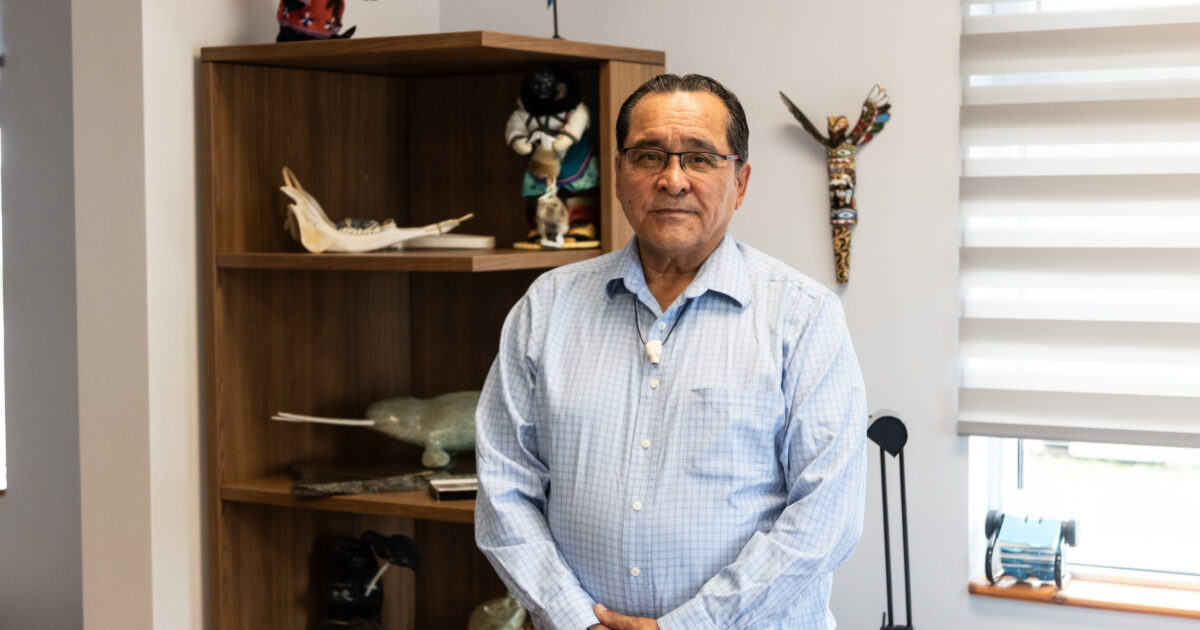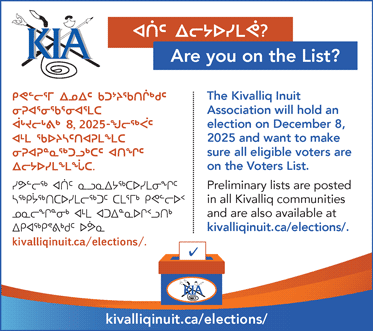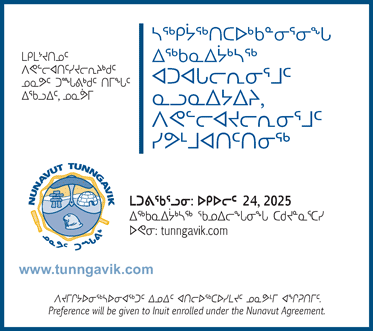Nunavik Inuit organization plans ‘commemoration’ of JBQNA signing anniversary, rather than celebration
When the James Bay and Northern Quebec Agreement negotiations were underway 50 years ago, Pita Aatami was a teenager. Or as he described himself, “a very curious young boy.”
At that age, Aatami was too young to be involved in the negotiations themselves. However, he followed and listened, wanting to know what Inuit were about to get themselves into.
“I went to the town hall meetings they had when they were updating the community,” Aatami said.
“I was not part of it, but I heard like, ‘What’s that going to bring us?’”
Today, Aatami is president of Makivvik – the organization established in 1978 following the JBNQA’s signing to be the rights-holding voice for Nunavik Inuit.
The organization’s corporate roles include receiving, administering, distributing and investing the compensation money payable to Nunavik Inuit, as provided for in the JBNQA.
Aatami’s time with Makivvik dates back to 1987. Since then, he has held several leadership positions within the organization and its subsidiary businesses. His first stint as president was from 1998 to 2012, followed by his re-election in 2021.
Looking back on the signing of the JBNQA, Aatami said the negotiators at the time were “forced” into “an agreement that they didn’t agree with.”
He mentioned mining claims as land that was “stolen” as a part of the agreement.
However, with the $90 million Makivvik received as part of the agreement, the organization has been able to grow that money by investing, creating businesses, and returning it to the communities through infrastructure and services.
“Makivvik itself has contributed close to a billion dollars in different infrastructure over the years without any government assistance in a lot of cases,” Aatami said.
“Even though they only got $90 million, they were able to grow their money, they invested wisely and created companies like Air Inuit.”
He also stated, “We just didn’t wait for handouts.”
Aatami credits Makivvik for building arenas, recreation centres and local FM radio stations in communities as part of that nearly $1 billion contribution to Nunavik.
Makivvik’s subsidiary businesses have been success stories, Aatami said, with companies such as Air Inuit and Kautaq Construction creating many jobs, including Inuit pilots.
As the representative for Nunavik Inuit, Makivvik has a seat at the national level of the Inuit-Crown Partnership and as a board member of Inuit Tapiriit Kanatami.
With those positions, as well as working with Quebec, Makivvik is able to advocate for federal and provincial funding for projects in Nunavik, as well as take action on issues such as the housing shortage and the cost of living in the North.
“We want Quebec and Canada to contribute to these kinds of things… If you’re doing that in southern Canada, why isn’t that being done in our part of the world?” Aatami said.
“We’re taxpayers. Why don’t we get the same treatment? In a lot of cases, we don’t have the facilities like you might have in southern Canada.”
A lot is on the agenda for the future of Makivvik. Most notably, the organization is negotiating a new self-determination agreement with the provincial government.
On November 11, Makivvik plans to recognize the date that marks 50 years since the JBNQA was signed.
However, it won’t be a date of celebration.
“It’ll be more like a commemoration in my opinion, because for me it’s not something that I want to be proud of,” Aatami said.
Three communities – Puvirnituq, Ivujivik, and Salluit – were not in favour of the JBNQA, and those who opposed it were left feeling “hurt.”
“I wouldn’t have signed that agreement. That’s my own opinion, but understanding our negotiators who signed that agreement, it’s like they were forced,” Aatami said.
“I want to acknowledge these people who worked for us to get the best they could for Nunavik Inuit, even though they didn’t have the knowledge like we have today.”
This article is part of Nunatsiaq News’ commemoration of the 50th anniversary of the signing of the James Bay and Northern Quebec Agreement in 1975.
![]()
This project has been made possible in part by the Government of Canada.




